| Feline
Estrous Cycle
 396-403 396-403

General While
some individual aspects of reproductive physiology in the cat are shared
with other domestic species, when combined, they set the cat apart as
somewhat unusual. Like the mare, the queen is
seasonally polyestrous and responsive to photoperiod. Like the bitch,
the queen is unusual in maintaining sexual receptivity for a period of
some days after ovulation, while the corpus luteum is forming. Most
importantly from a clinical standpoint, like the rabbit and ferret the
queen is an induced ovulator, requiring a copulatory stimulus or
exogenous hormones for ovulation and corpus luteum formation. SEASONALITY
-
Cyclicity of the cat has been determined
to be dependent on photoperiod. Cats are "long day breeders"
and require 12 hours or more of light to maintain normal cyclicity.
-
Normal polyestrous behavior can be induced by controlling exposure to
light.
-
Cyclicity stopped abruptly and folliculogenesis was inhibited in
queens exposed to less than 8 hours of light.
-
Cyclicity in the cats
resumed an average of 16 days after returning to a 14 hour photoperiod.
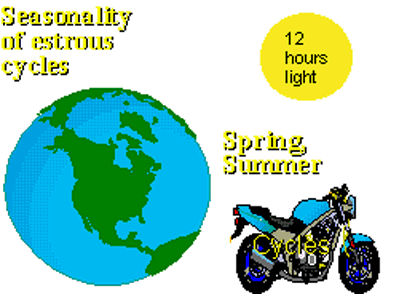
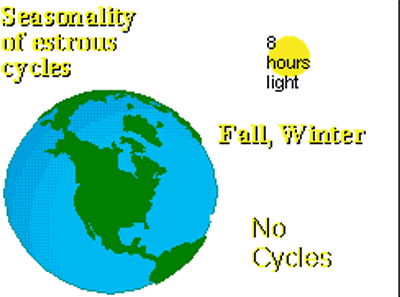
- Seasonality is more pronounced in cats subjected
to natural lighting especially at higher latitudes.
- Long
haired breeds tend to be more seasonal than short-haired breeds, with
90% of long-haired cats experiencing a period of anestrus compared to
only 39% of short-haired cats. In an extensive
survey of 168 queens, approximately 50% of cats cycled year-round while
the remainder experienced a period of anestrus from September to the end
of January.
Puberty
-
Puberty in the cat usually occurs at 9 to 10 months of
age.
-
Puberty may occur as early as 4 months or as late as 2 years,
however, because cats are seasonal breeders and the season in which the
kitten was born influences the age at which puberty occurs. Kittens born
early in the year may be too young to reach puberty before the onset of
seasonal anestrus. With the onset of cyclicity the following year, they
would be older than kittens born after them the previous year who would
be entering puberty with them.
STAGES OF THE ESTROUS CYCLE
The phases of the feline estrous cycle are identified as
- Proestrus,
- Estrus,
- Interestrus,
- Diestrus or pseudopregnancy,
- Anestrus.

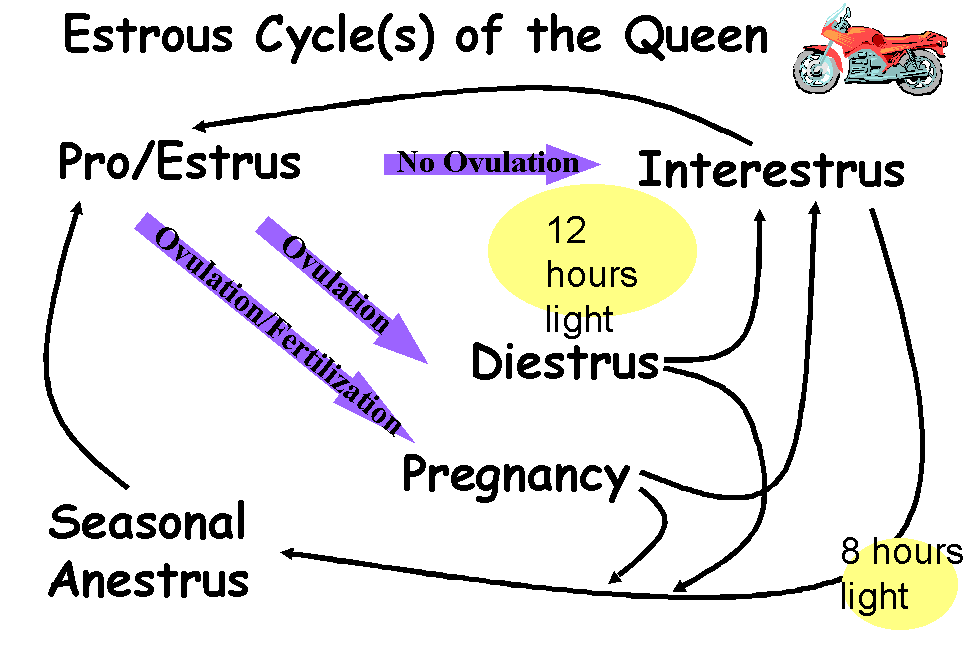
Click to here on the diagram
above to view a PowerPoint on the queen's estrous cycle.
Proestrus
-
Proestrus, the period preceding estrus, lasts 1 to
2 days. This phase is often unobserved and is seen in only 16% of
estrous cycles according to one report.
-
During this time, the female is attractive to but
not willing to accept the male.

- Click here to view a queen not
showing lordosis when stroked.
Right click on the frame to start.
- Behavioral changes may begin to be seen during
proestrus. The queen may rub against objects, vocalize and assume a
lordotic posture. Sometimes referred to as a "dragster
posture", she will place her front quarters on the ground,
elevate her hind quarters and lift her tail to one side. When the
dorsal caudal area is stroked, she will tread with her hind legs.
Estrus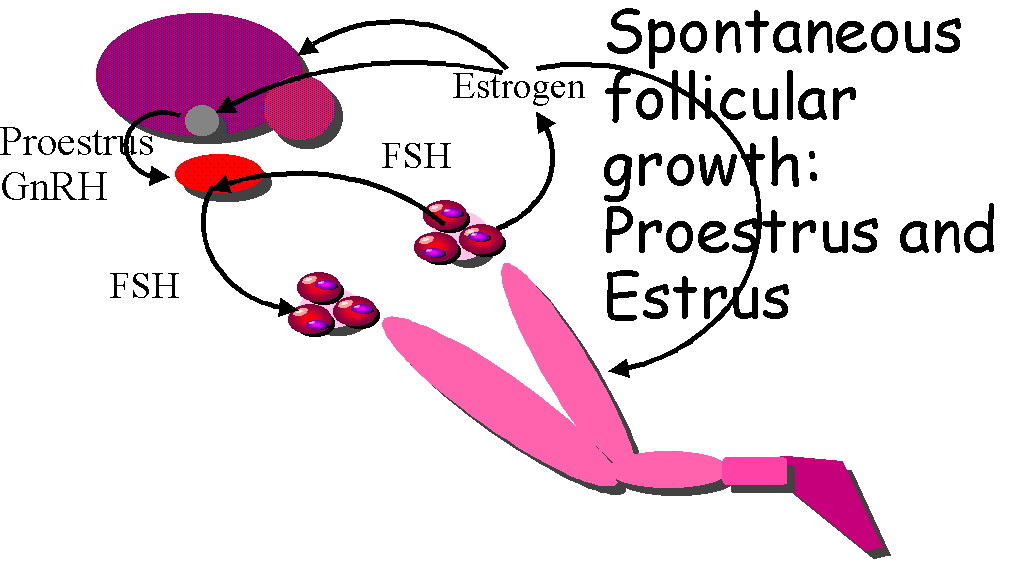
- Estrus is defined as the period of sexual
receptivity.

Click here to view a queen showing lordosis
when stroked.
Right click on the frame to start.

Click here to see videos of queens treading during
breeding.

Click here to see videos of queens
and treading and rolling after breeding.
Right click on the first frame to start.
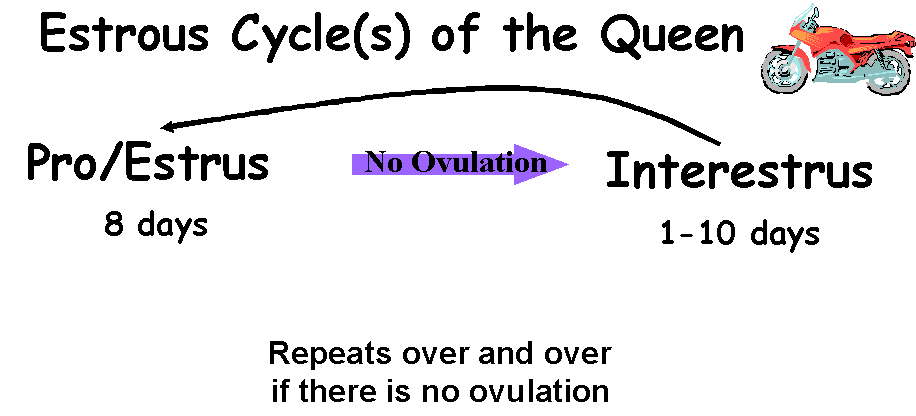
Diestrus
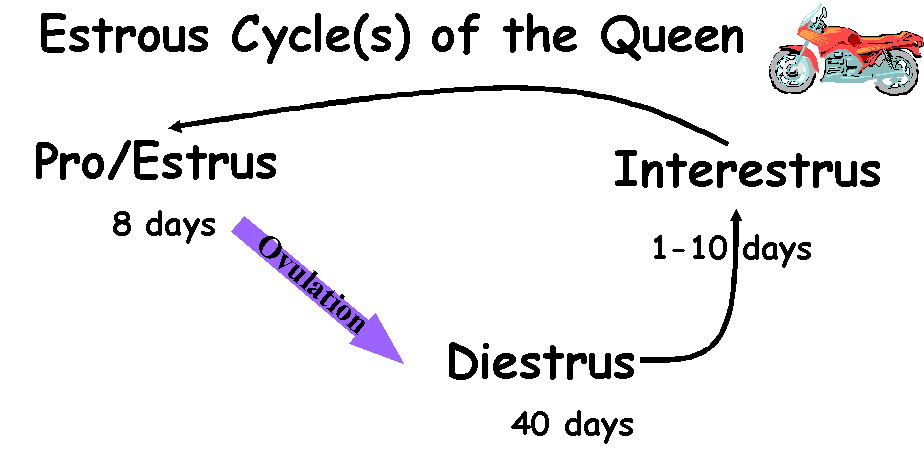
Anestrus
- Ovulation is triggered by copulation or mechanical
stimulation of the vagina.
- Stimulation of nerves in the vagina
causes a reflex stimulation of the hypothalamus via pathways in the
spinal cord.
- The hypothalamus releases gonadotropin releasing
hormone (GnRH) which acts on the anterior pituitary, resulting, in
turn, in a release of luteinizing hormone (LH).
- LH, then, stimulates
ovulation and the development of corpora lutea.
- Ovulation is dependent on adequate LH release.
- Both
the peak concentration and the duration of elevation of LH are
important in determining whether ovulation takes place.
- Insufficient
copulatory stimuli will fail to induce enough LH to be released to
cause ovulation. LH release occurs within minutes of coitus and
peaks approximately 1 to 2 hours later.
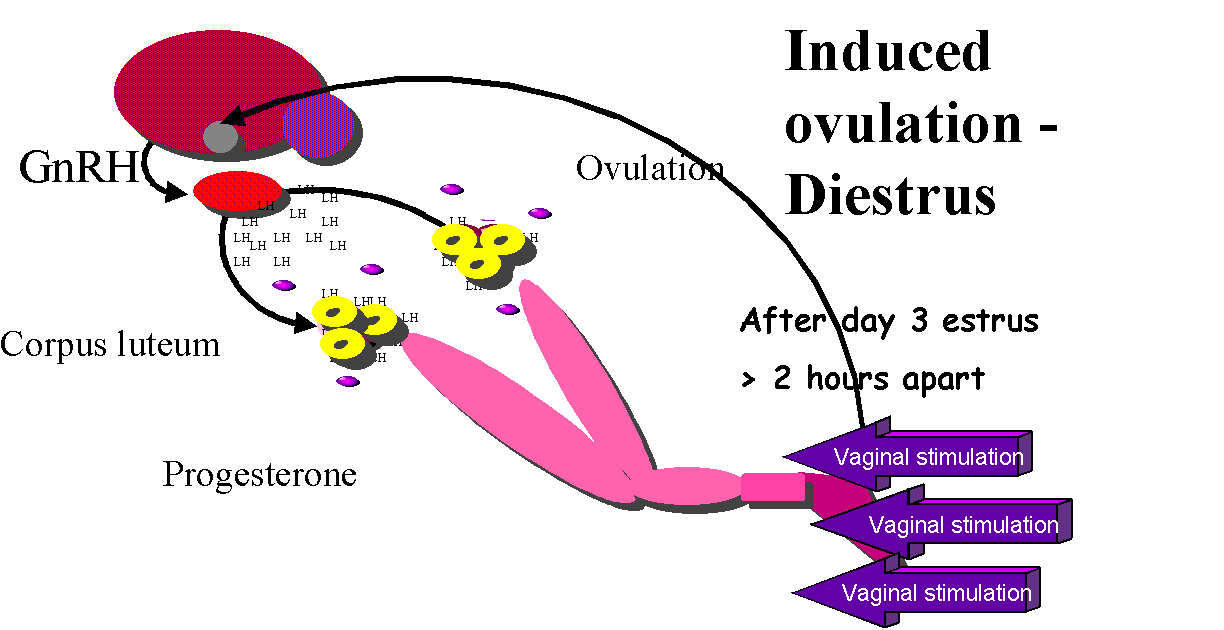
-
Release of LH by the pituitary
appears to be in part dependent on the duration of its prior
exposure to estrogen. The LH response to copulation, therefore, may vary depending on the day of
estrus upon which coitus occur. If vaginal stimulation occurs before
day 3 of estrus, the queen may not ovulate.
-
Reports have verified that spontaneous ovulation
may occur in the queen.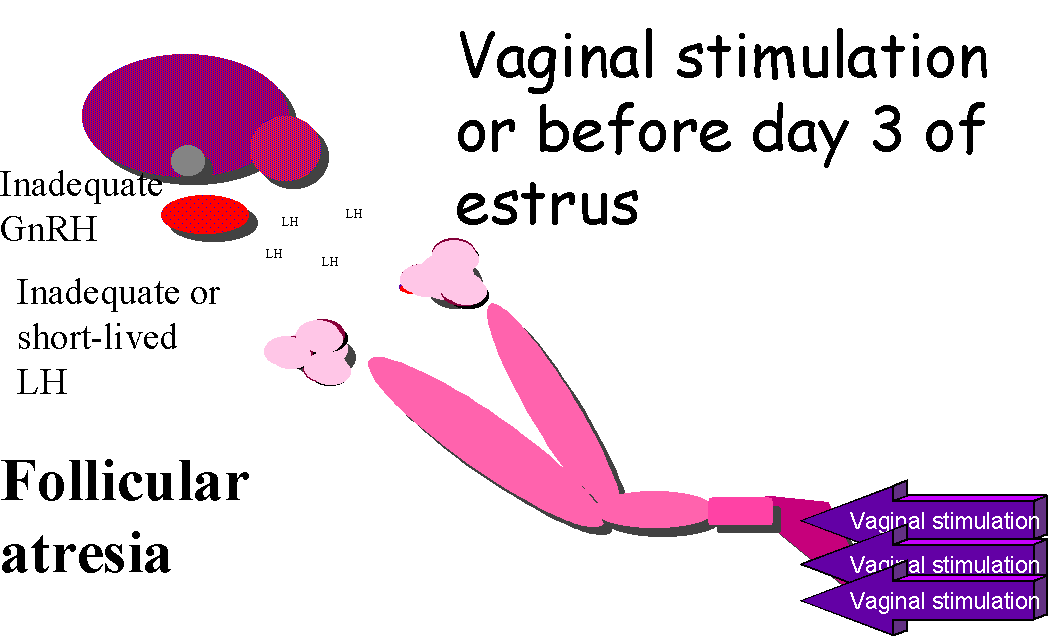
Copulations and LH Release
-
Multiple copulations result in
higher levels of LH in plasma and are more likely to result in
ovulation than single matings.
-
The duration of elevated LH in plasma
also determines whether ovulation occurs.
-
Frequency of coital
stimuli, therefore, is an additional factor to consider in
determining the adequacy of coital contact.
-
According to one report,
LH decreased to baseline values within 12 to 24 hours after a single
mating or after multiple matings at less than a 2 hour interval.
Moreover, LH remained elevated up to 38 hours after multiple mating
intervals of every 3 hours. 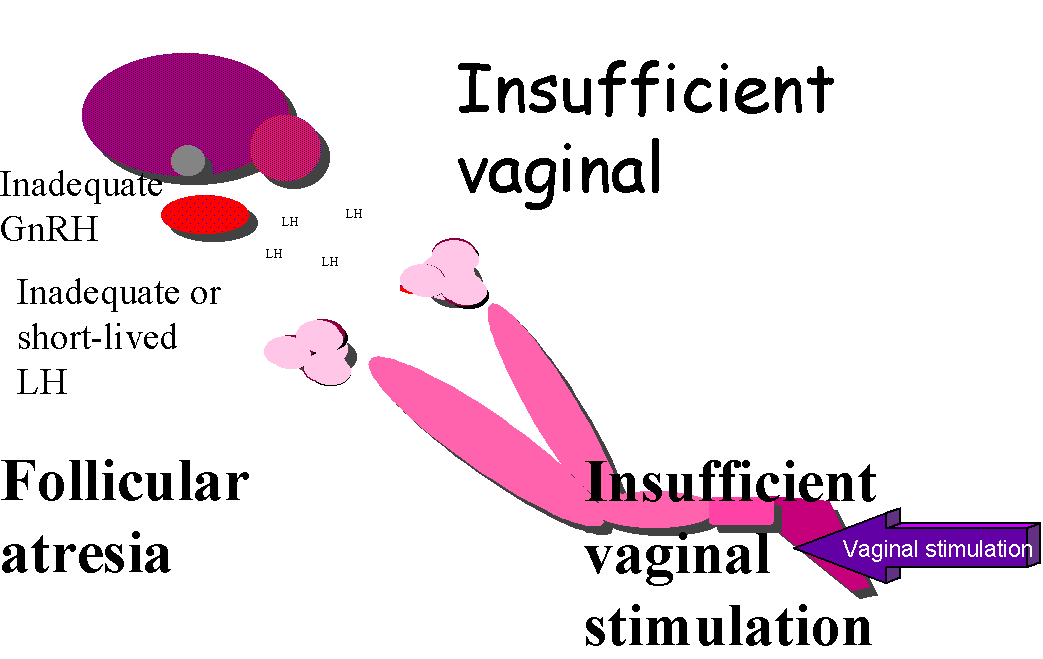
- To achieve sufficient LH release then, repeated
breeding at a reasonable interval should be encouraged. The LH
response to a single mating can vary substantially, and neither
single nor multiple copulations can ensure ovulation. To increase
the likelihood of ovulation breeders should try to maximize the
number of matings and breed on successive days of estrus.
Time of Ovulation
- Ovulation reportedly occurs 24 to 60 hours post
coitus and may vary depending on the mating pattern. Progesterone
levels in the blood can be used to verify ovulation. Concentrations
of progesterone greater than 1 ng/ml are considered indicative of
ovulation. Peak levels of 35 ng/ml in the pregnant queen and 24 ng/ml
in the pseudopregnant queen are observed at approximately day 21
post coitus.
If you want to have
some fun looking at a slide show, try this....1.
You must be on an SVM computer that is hooked to the
network
2. Print these instructions....I do not think you will
remember all of this.
3. Click on the minus(-) sign in the upper right hand
corner of this program to minimize. It will disappear, but you should
not have to log on again. Minimize all the programs this way until you
see the 'Network Neighborhood' icon.
4. Double click on the Network
Neighborhood to open the network.
5. Double click on 'Svmweb2',
it should be in the upper left hand corner.
6. Find the
'Eilts'
folder and
double click on it.
7. Find Double click on the
Multimedia folder .
8. Double click on the
Presentations folder.
9. Find the 'catcycle'
icon and double click on it.
10. Click on 'OK'.
11. Click on the little movie camera icon at the top to
start the slide show. Follow the instructions. It may take a little
while for the cursor to appear. You can only click and have something
happen when you see the cursor.
12. This is intended to have a lecture with it, but if
you pay careful attention, you should be able to figure it out. Sometimes
things happen without you 'clicking', so pay attention.
13. To get out, just press the "ESC" button on
the keyboard and select "Quit screen show", and then click the
'x' on all the open programs to shut them down. You can maximize Lotus
LearningSpace by clicking on the icon on the bottom of the screen.
14. It is faster to do, than to read these instructions!
|











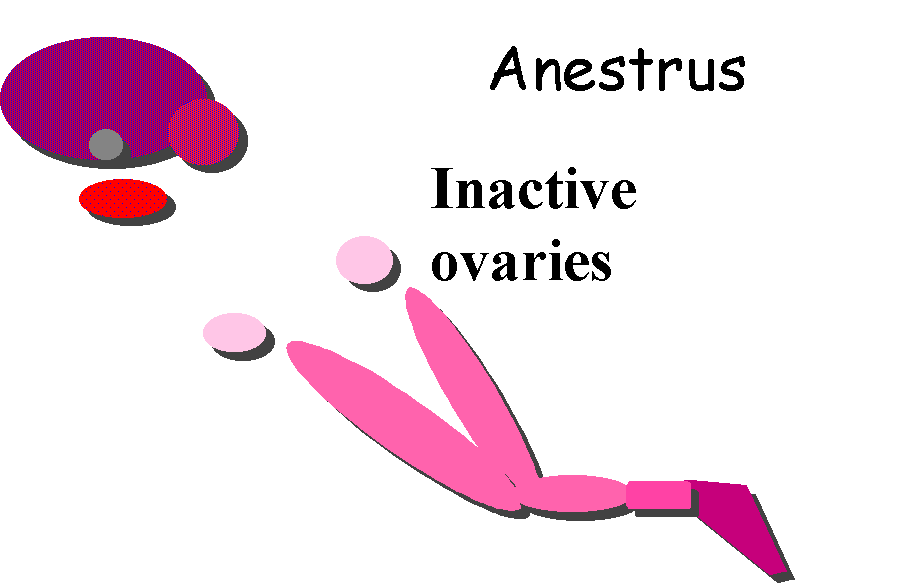
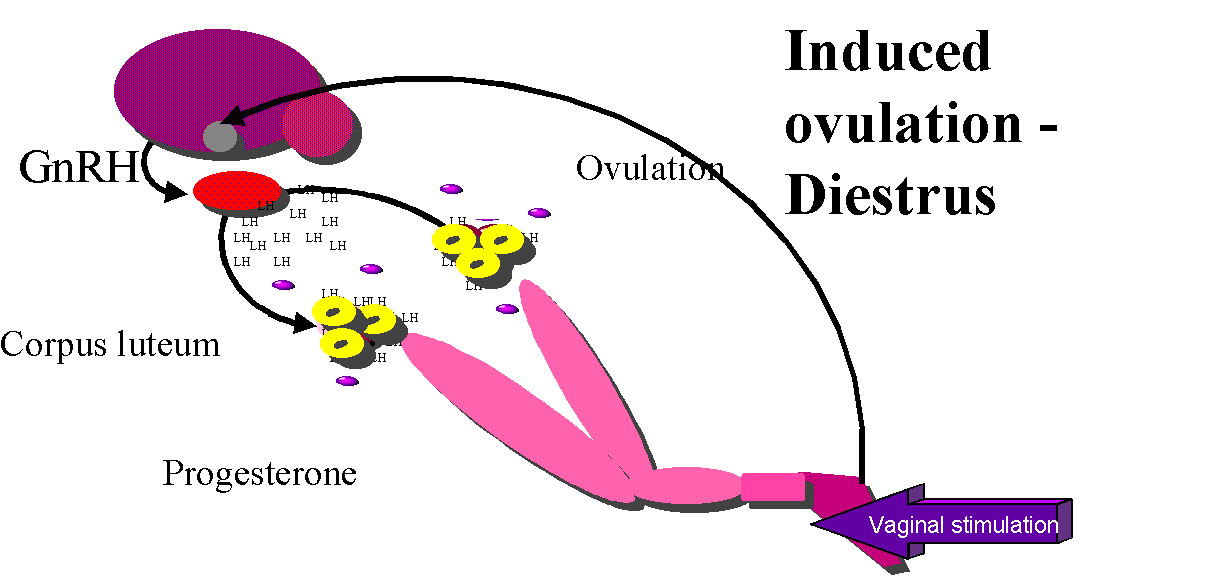



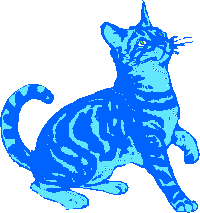 Feline
Index
Feline
Index